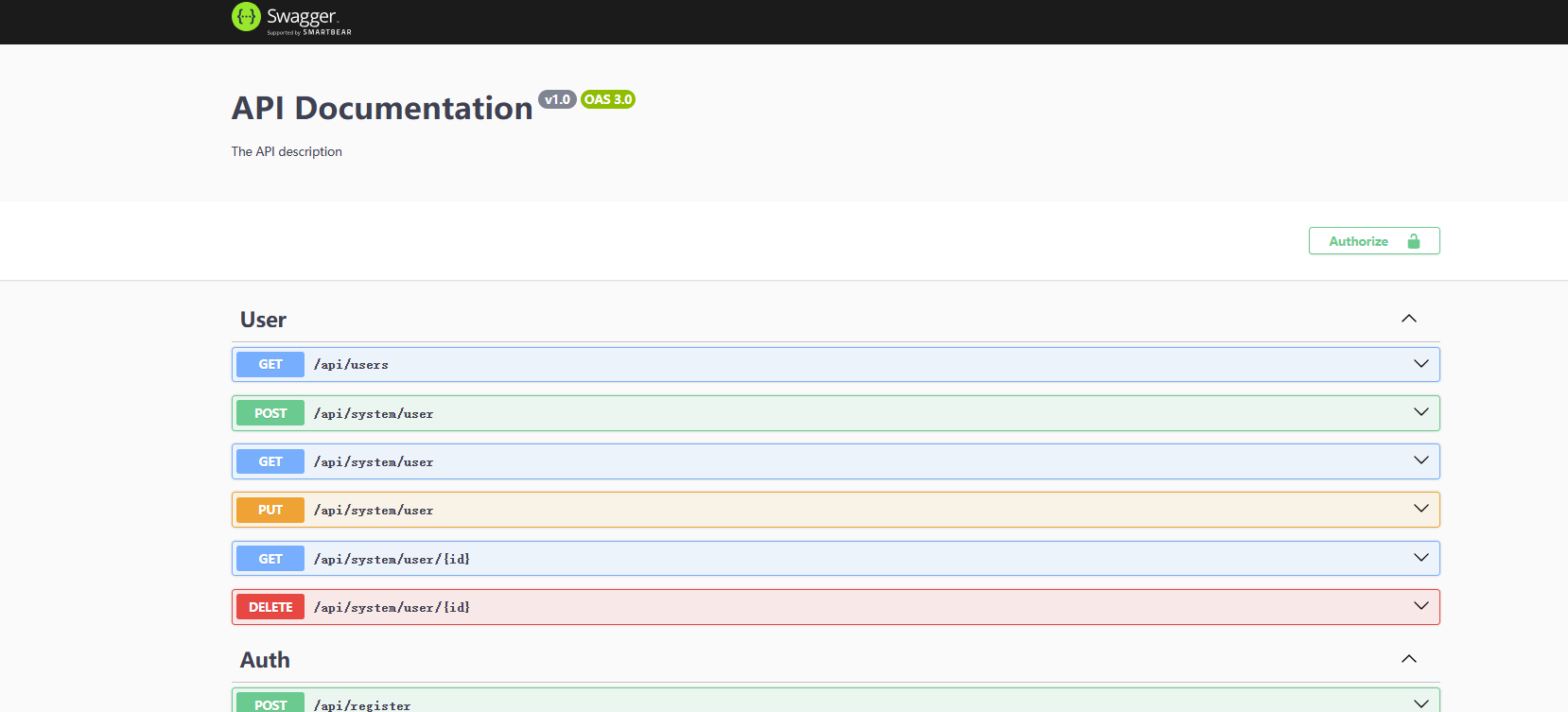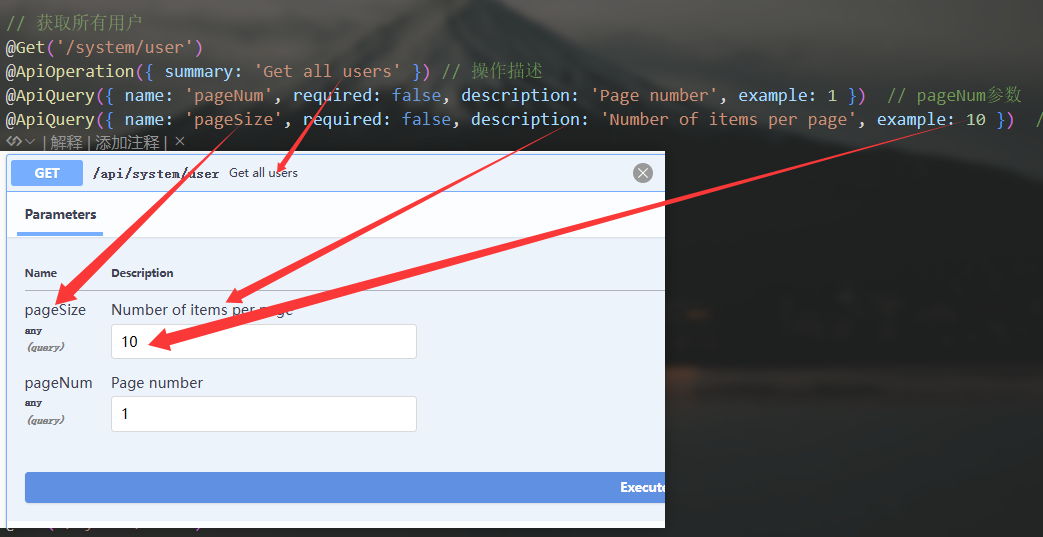Appearance
Swagger文档
1、安装Swagger相关依赖
javascript
express:
npm install @nestjs/swagger swagger-ui-express
yarn add @nestjs/swagger swagger-ui-express
fastify:
yarn add @nestjs/swagger fastify-swagger2. 配置Swagger
在main.ts文件中进行Swagger导入SwaggerModule和DocumentBuilder来设置Swagger文档的基本信息。
javascript
import { SwaggerModule, DocumentBuilder } from '@nestjs/swagger'; // 引入swagger文档
// 配置Swagger文档
const config = new DocumentBuilder()
.setTitle('API Documentation') // 设置文档标题
.setDescription('The API description') // 设置文档描述
.setVersion('v1.0') // 设置API版本
.addBearerAuth() // 如果有认证机制可以加上认证
.build();
// 创建Swagger文档
const document = SwaggerModule.createDocument(app, config);
// 配置Swagger UI,默认访问地址为 /api
SwaggerModule.setup('swagger', app, document);ok,配置部分非常的简单
3、查看和设置
👉文档地址
打开查看我们的文档地址,我设置的端口号为8888
javascript
http://localhost:8888/swagger这个时候已经可以看到我们的文档了

👉Execute执行查看返回结果
点击执行以后返回结果就会显示到我们这里

👉自定义Swagger配置
使用@ApiProperty()装饰器来描述DTO对象的属性
javascript
import { ApiProperty } from '@nestjs/swagger';
export class CreateUserDto {
@ApiProperty({
description: 'The name of the user',
example: 'John Doe',
})
username: string;
@ApiProperty({
description: '密码必须是6位以及以上',
example: '123456',
})
password: string;
}👉自定义Get请求参数
请求参数的更改我们前面使用 ApiOperation描述最上面的使用ApiQuery即可 
👉自定义post参数示例
javascript
@ApiProperty({description: '用户密码(必须是6位及以上)',example: '123456'})展示的时候 
javascript
{
"username": "18735791234",
"password": "123456"
}👉定义返回参数
@ApiResponse 装饰器来定义 GET 请求返回参数的含义
javascript
export class ResponseUserDto {
// 定义一个响应数据传输对象
@ApiProperty({
description: 'The status code of the response',
example: 200,
})
// 定义响应状态码
code: number;
@ApiProperty({
description: 'The data returned by the API',
type: [UserDto], // 表示返回的数据是一个 DataDto 数组
})
// 定义返回的数据
data: UserDto[];
@ApiProperty({
description: 'The message describing the result',
example: 'Success',
})
// 定义返回的消息
message: string;
}
// 返回数据的类型
@ApiResponse({
status: 200,
description: '成功返回数据',
type: User, // 指定返回的数据类型
})到时候给我们返回的案例
javascript
{
"code": 200,
"data": [
{
"username": "18735791234",
"password": "123456"
}
],
"message": "查询成功"
}👉返回参数显示隐藏
用到@Expose() 显示字段以及 @Exclude() 隐藏字段
javascript
import { Exclude, Expose } from 'class-transformer';
@Expose() // 显示字段
@ApiProperty({
description: '用户密码(必须是6位及以上)',
example: '123456',
required: true, // 必填
})
password: string;
required: true; // 必填
@Exclude() // 隐藏字段
@ApiProperty({
description: '用户年龄',
example: 17,
required: false, // 必填
})
age: number;服务层过滤
javascript
import { UserDto} from '@/common/pipes/user.dto';
async findAll(): Promise<UserDto[]> {
// 调用userRepository的find方法,返回一个User数组
// return this.userRepository.find();
const users = await this.userRepository.find();
return users.map(user => plainToClass(UserDto, user, { excludeExtraneousValues: true }));
}这个时候给我们返回的数据
javascript
[
{
"username": "123",
"password": "$2b$10$T6B/W5UTcoakCEmlUdW85Suihl8C6jhRi.A6"
},
{
"username": "21323123123",
"password": "$EumIdh24Dr55QVkhXKbaiMBTuiVo3.bwu"
},
{
"username": "1221112",
"password": "$2b$10$kHucvS.CyePdwfMzmlUdW85Suihl8C6jhRi.A6"
}
]